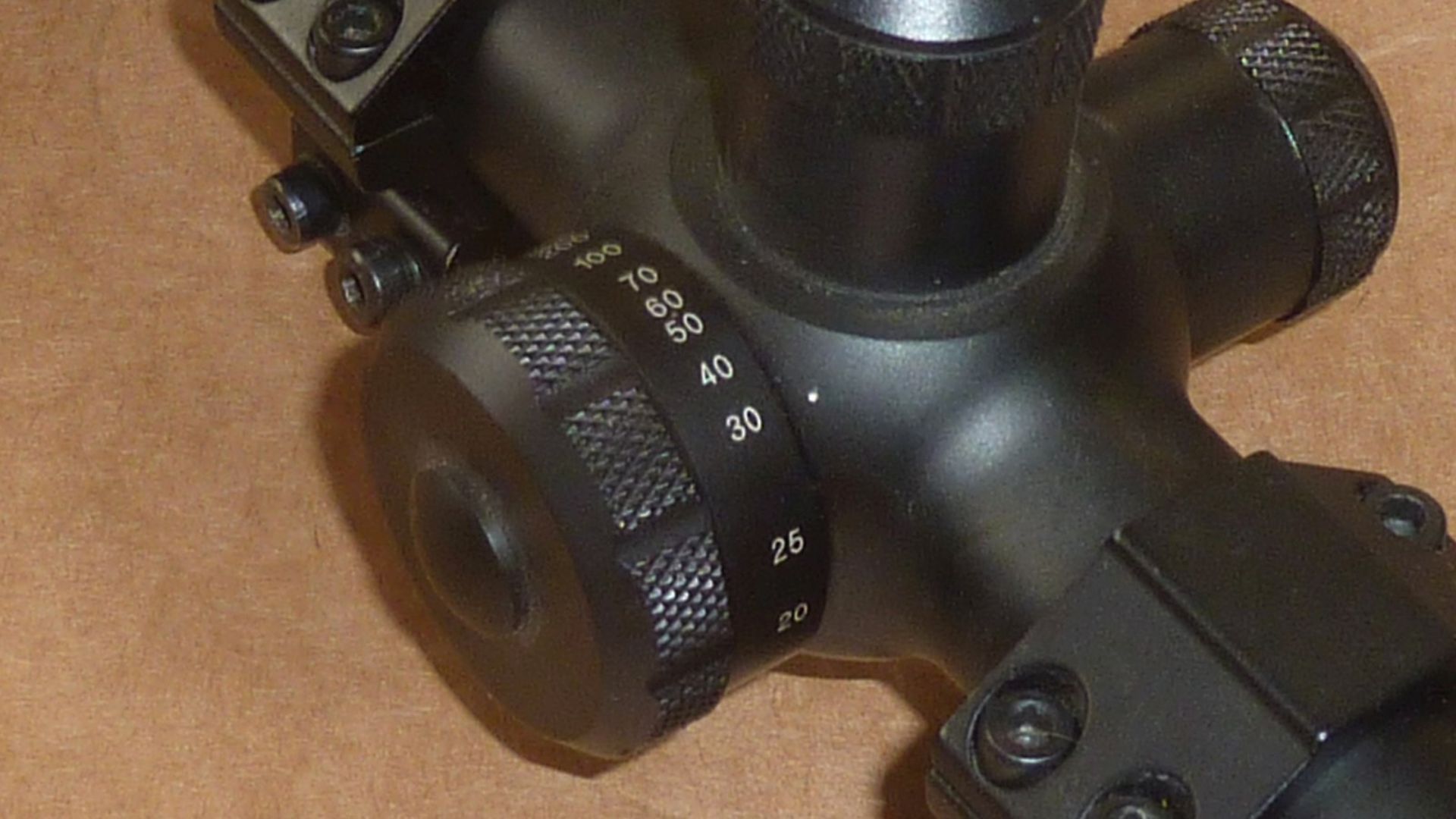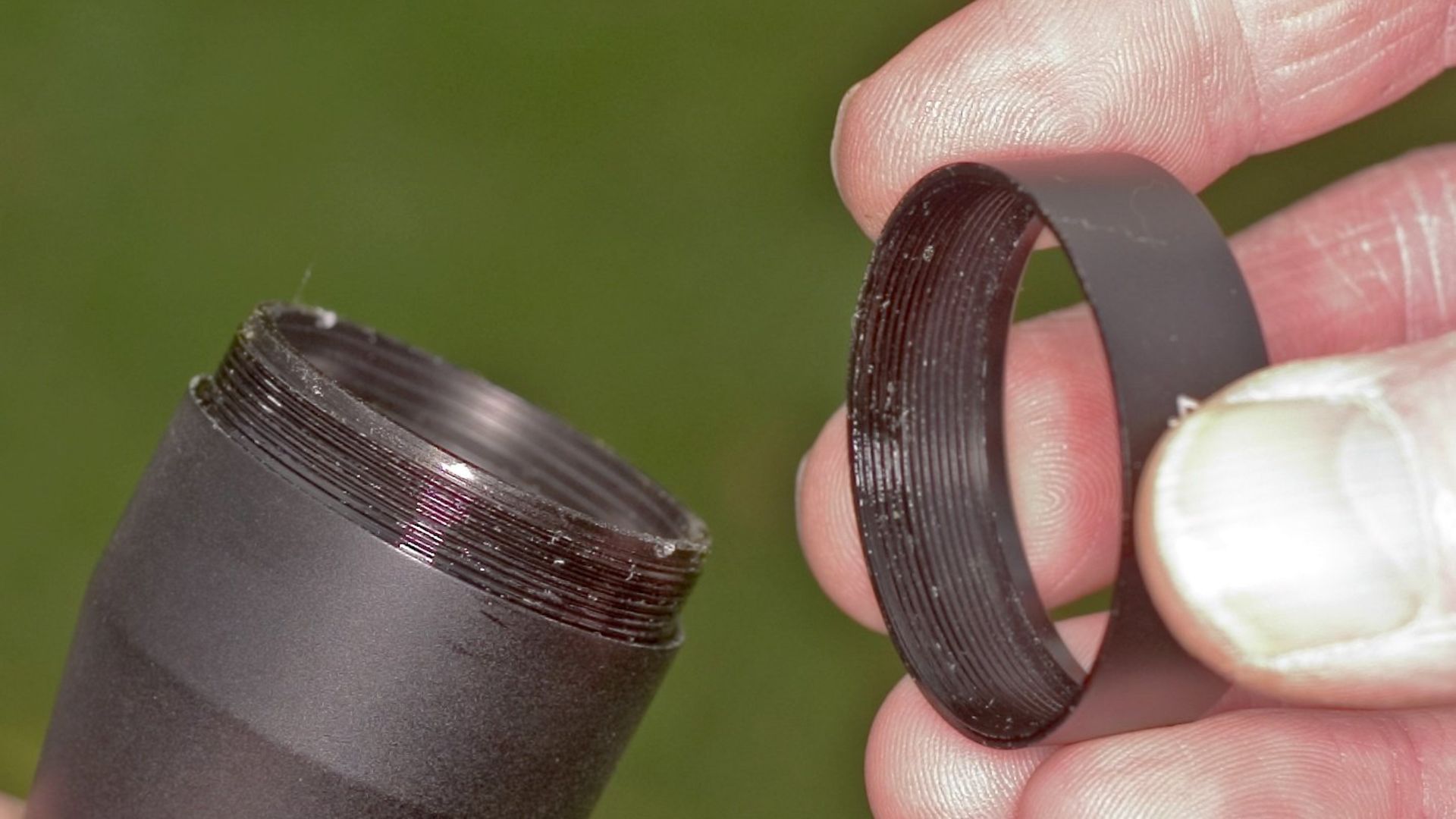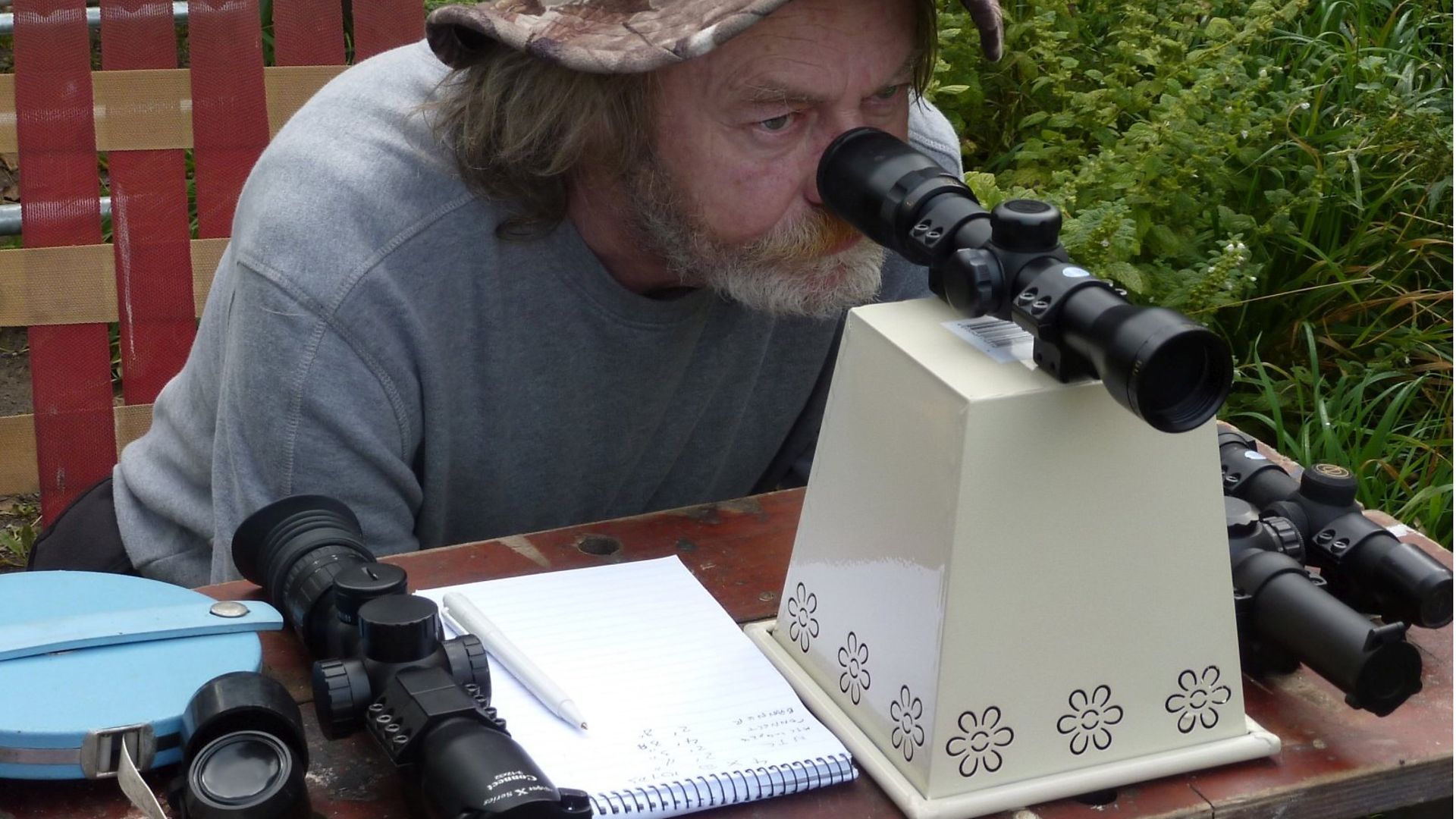Jim Tyler delves into the relationship between parallax and precision, explaining what parallax error is, the effect it has on accuracy, and how to fix it!
In the early 1980s, the arrival on the UK market of fairly low cost, good quality scopes made in Japan neatly coincided with the launch of high quality and affordable ‘Sportsmatch’ mounts, and transformed outdoor airgun sports. Suddenly, most people found good scopes and mounts were within their price range, and we eagerly took advantage of the benefits of scopes.
Airgun hunters no longer had to try to focus simultaneously on a rear sight maybe 12” away, a fore sight over twice the distance, and a distant target, because the target and reticle were on the same focal plane and, even better, we could see the entire target, rather than having a large chunk of it obscured by a rear sight, so we could aim off a little high to extend hunting ranges.
Just as we were all happily using our scopes, the manufacturers discovered the sales potential offered by parallax error, and produced a solution in the form of scopes with objective lens carriers that could be turned to move backwards and forwards to focus precisely. Few of us really understood what parallax error was, let alone how much it could affect accuracy, but we eventually gave in and bought parallax adjustable (PA) scopes.
 credit: Archant
credit: Archant
What is parallax on a scope?
When people speak about parallax, they are describing the relationship between the image you see through the scope, and the reticle, and to understand it, we need first to accept that light travels in straight lines. The light we see when looking at a target is light (usually from the sun) that has bounced off it, and travelled in a straight line to our eye.
Suppose that instead of a scope, we were to look though a length of 6” diameter pipe with a central reticle, and to move our head from one side of the pipe to the other; the image of the target would move behind the reticle because the light is travelling in a straight line from the target to wherever our eye moves. If we then looked through a 3” pipe, the image would move less, and less again with a 1” pipe, simply because narrower pipes limit the distance by which we can move our head while looking through the pipe.
The great problem with the image shift is that the reticle, and hence the pellet point of impact, does not move – all that changes is the image, so that the reticle no longer indicates the correct pellet point of impact. Parallax image shift in a scope is exactly the same.
Now let’s take our 1” diameter pipe and stick an objective lens on it. What the objective lens does is bend the light that refracts (passes through it) in toward the centre of the pipe in a cone so that, at some point, all of the light converges at a single point, and the same happens inside a scope. After the light has all converged at a single point, it then diverges, so that the image is inverted, until it reaches the cluster of lens elements in the ocular bell that focus in, invert it, and allow us to view the image.
What is parallax focus?
Parallax focus mechanisms in scopes can be either a moveable objective lens that can be screwed in and out, usually called adjustable objective or AO scopes, or a lens element – or cluster of lens elements – that can be moved back and forth inside the scope body tube by means of a sidewheel, usually called ‘side focus’ or SF scopes. In both cases, the mechanism moves the point at which the converging light from the objective lens comes to a point, and the ideal is to move it to the plane of the reticle, which locks the reticle relative to the image.
What is ocular focus?
The other focus adjustment is the ocular focus at the rear, and what this does is focus the diverging light to a single point on the retina of your eye, and when the light is at a single point both at the reticle and your eye’s retina, parallax image shift is eliminated. Sounds great, but there’s a fly in the ointment, which is that the objective lens can only focus at one distance at a time, so if you focus at 25 yards, that is the only distance at which parallax image shift cannot occur, and the further from 25 yards the target, the greater the potential for image shift if you fail to place your eye behind the axis of the scope.
No focus?
Some scopes have no focus mechanism and can have focus fixed to 100 yards or even 150 yards, leaving plenty of potential for parallax error at airgun ranges. With care, it is often possible to focus the scopes at airgun ranges (25 to 30 yards) by making a tool that exactly fits two notches in the objective lens carrier, heating the objective bell front to melt the thread lock solution that prevents to objective carrier from turning, and turning it anti clockwise.
To check focus, you need to have the scope pointing at a target at the desired range, then view the target through it while moving your eye side to side, without moving the scope, and looking for image movement relative to the reticle, which is not easy if the scope is mounted on the rifle. I made a scope rail that attaches to a tripod for this
very purpose.
 credit: Archant
credit: Archant
The three measurements that affect parallax
The magnitude of parallax image shift is determined only by three measurements; the diameter of the objective lens, the distance at which the lens is focused, and the distance to the target.
The larger the objective lens, the greater the potential magnitude for image shift; a 40mm objective lens offers twice the potential shift of a 20mm lens, for example, and that’s not the only advantage of smaller objective lens scopes either, because the smaller the objective lens, the greater the depth of field (DoF), which is the distance between the nearest and most distant objects that appear in focus.
The combination of enhanced DoF and limited potential parallax shift, incidentally, makes a 32mm objective lens scope very appealing for HFT, in which scopes cannot be adjusted part-way through a course.
The distance at which the scope is focused (Df) and the distance to the target (Dt) work in combination to dictate the maximum potential image shift, and the greater the difference between them, the greater the potential image shift. Combining the Dt and Df with the objective lens radius (half the diameter) allows us to use a very simple formula for calculate the maximum potential image shift, that is, the distance between the indicated and actual pellet impact point.
Multiply the objective lens radius (Ro) by the difference between the focus and target distances, and divide by twice the focus range, and you have the greatest possible distance between the indicated and actual pellet point of impact.
Ro ×(Dt-Df)÷(2 x Df)
Let’s consider the maximum potential shift for a fixed focus 40mm objective scope focused at 100 yards with a 25 yard target. The maximum potential shift is 20 x 75 / 200, or 7.5mm, and that is the farthest the pellet can land from the desired point of impact in any direction due to parallax image shift, depending on where your eye was relative to the scope axis. That’s a lot, and would be disastrous to a target shooter or hunter, but it’s important to recognise that it is the maximum POTENTIAL shift, and that the actual shift can be less – far less.
Experimenting with parallax
In a series of experiments in which I was not too careful in my eye placement behind a scope with focus fixed at 100 yards, I found that the actual shift worked out at roughly a quarter of the potential shift so, in the example above, the shift would have been not 7.5mm, but less than 2mm. Careful eye placement will reduce the 2mm figure further, and precise eye placement will give zero parallax shift.
Parallax error is not quite the issue many believe, but its effect can be exacerbated by other factors, namely crossover, cant and wind drift.
- Crossover
During every single shot you take, the axis of the scope should be exactly vertically above the axis of the barrel bore. If the bore is not exactly below that of the scope, the pellet will start from one side of the sight line, it will cross the sight line at your zero distance, and carry on away from the sight line, which is referred to as ‘crossover’.
Crossover can be caused by a mismatch between scope mounts that have one fixed and one adjustable ‘foot’, and the width of the grooves or rail into which they clamp, and the problem is the fixed foot. If the misalignment is on the opposite side to the fixed foot, then a thin shim can be inserted between the foot and the groove/rail to pull the scope into alignment. If the misalignment is on the side of the fixed foot, you need different mounts. - Cant
Even if the mounts are perfect for the rifle, I have looked through many scopes that have been fitted with the vertical part of the reticle at an angle which, when the rifle is held so that the reticle is vertical, pushes the barrel to one side of the sight line; this is called rifle ‘cant’, and the result is crossover. This can be avoided by fitting the scope so that the vertical part of the reticle points directly at the centre of the action, and this is easily checked by looking through the scope with your eye just behind the plane of the stock butt.
Even if the reticle is in line with the axis of the barrel, you can still get crossover if you cant the rifle (hold it at an angle), which is easily done if you’re shooting from uneven ground, so if you do miss low and to one side, cant is the most probable cause.
Sometimes, parallax error can push the pellet a little away from the intended POI, and crossover/cant, plus wind drift can act in concert in the same direction to push the pellet a long way from the intended POI. On other occasions, one of the factors can push the pellet one way, another in the opposite direction, so they cancel each other out. I have come to believe that a combination of a little parallax error, a little crossover/cant and a little wind drift all acting in concert is probably the cause of many otherwise inexplicable ‘fliers’.
Does parallax error matter?
How much of an issue parallax error is depends on its scale and your expectations of precision. If you are a field-target shooter, then you are allowed to adjust parallax focus for every shot, so parallax error should not be an issue. If you are a bench-rest shooter looking to place pellet on pellet, then any source of inaccuracy, however slight, is a serious matter.
In HFT shooting, parallax focus cannot be adjusted during the course of a competition, so let’s look at the worst case scenario. Most people focus at 25 to 30 yards, so if we take focus as 25 yards and look at the potential image shift at the longest range of 45 yards, for a 40mm objective lens scope, maximum image shift works out at 8mm, easily enough to take a pellet out of the kill zone.
 credit: Archant
credit: Archant
A simple fix for parallax error
If you take a little care to try to place your eye in the same position behind the ocular lens for every shot, though, the potential parallax error will reduce, as in my experiment, to perhaps nearer 2mm.
Two millimetres is enough to tip the balance when you have a splitter, from getting enough lead on the paddle to knock it down or not but, of course, it works both ways so, for every point it costs you, it can just as easily gain you a point.
An argument could thus be made that parallax error is not a huge issue for many HFT shooters, but because the parallax focus rules forbid focusing for individual targets, there is the potential for some degree of error, so it makes sense to mitigate it.
Reducing parallax error
A growing number of HFT shooters seem to be switching to 32mm objective lens scopes, which reduce parallax error by 20% compared to scopes with 40mm objective lenses. Another way to reduce the potential for parallax error is to have a stock with a comb that helps to locate your eye in the same position behind the ocular lens, and the stocks of many rifles, especially top end, have adjustable combs, and for stocks that don’t, many HFT shooters use custom stocks that do.
Summary
In summary, unless a scope is perfectly focused on the target, and on the retina of your eye, there will be potential for parallax error but, with care, it can be reduced to inconsequential levels.